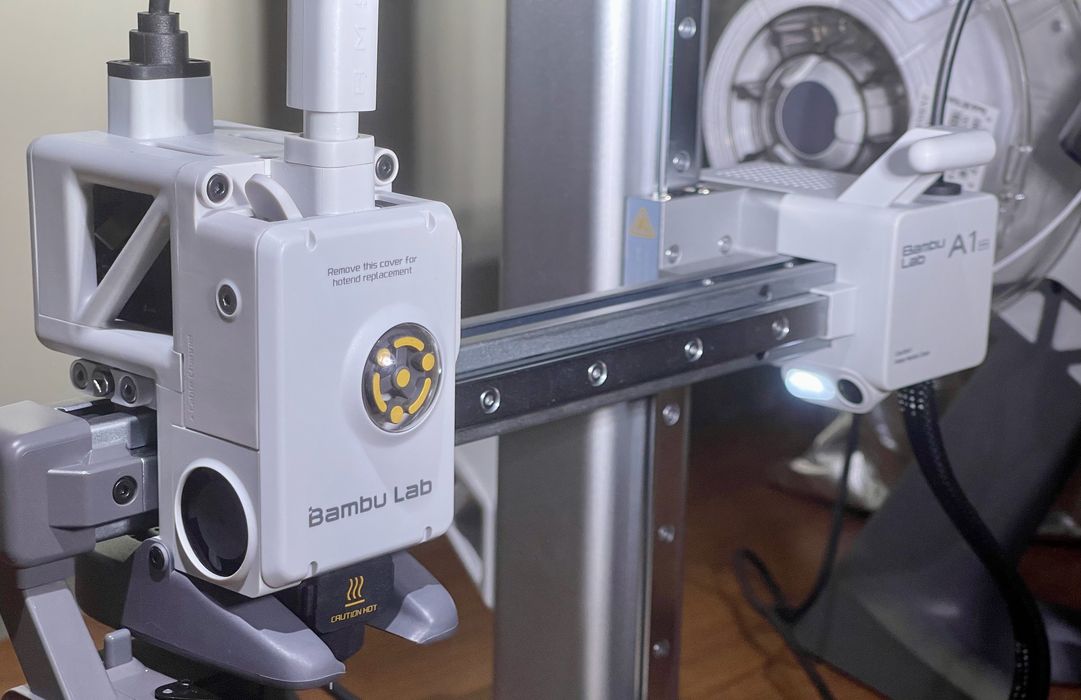
What must desktop 3D printer manufacturers do to keep up with their competitors?
There’s much turmoil in the world of desktop 3D printers these days, and it’s all Bambu Lab’s fault.
The company suddenly appeared on the scene a year or so ago, with the introduction of a revolutionary 3D printer that took things to the next level.
The main feature, at least as seen from a first glance, would be that their equipment prints far, far faster than other equipment at the time.
This quickly generated a series of frantic upgrades from competitors who suddenly found their equipment running as much as 5X slower than Bambu Lab’s. In the past year many desktop 3D printer manufacturers have released faster equipment.
Sometimes “faster” didn’t actually mean “as fast as Bambu Lab”, but instead meant “faster than our previous model”. It is very challenging to quickly crank out a new model that is 5X faster.
But some manufacturers did so.
Does this mean they have caught up to Bambu Lab?
Honestly, I don’t think so. Having spent considerable time with an A1 mini and spoken to numerous other Bambu Lab 3D printer operators, there’s a lot more to the story.
If that’s the case, then what do other competitors have to do to truly catch up to Bambu Lab? I’ve been thinking about this for a while, and here’s a list of items these manufacturers might consider.
Packaging
This might seem irrelevant, but until you’ve unboxed a Bambu Lab unit, you won’t understand. The A1 mini I unboxed was a masterpiece of package engineering. There were almost no straps, and ingeniously designed foam pieces held it all together securely.
I found the packaging welcoming and practical, which sets up your expectations for further steps with the device.
Set Up Effort
Most desktop 3D printers require a series of calibration steps that we’ve all become used to performing. However, the vast majority of the public simply would not. It seems that Bambu Lab envisions sales to the larger public, and they’ve simplified the set up of their device to perform literally all possible calibrations automatically. There’s basically nothing to do aside from powering it on and watching.
User Interface
I’ve been a critic of the generally awful user interfaces on almost all desktop 3D printers. They are typically too small, confusing, mis-translated, dull, and overflowing with data. Many are clearly designed by engineers, not by proper user interface specialists.
On the other hand, Bambu Lab’s interfaces are a pleasure to use, even on a tiny screen. This will almost certainly attract more consumers to the technology.
Cloud System That Works
Some desktop 3D printers now offer some form of a cloud system. This allows the operator to attempt remote monitoring and operation, which is quite desirable once you get used to it. No more running to the printer with the SD card!
Bambu Lab’s system works as you would expect. However, competing systems often have all kinds of challenges, including tricky setup procedures, works only on local LAN, and confusing interfaces once again.
Print Quality
Bambu Lab’s equipment includes flow rate management, which is used to create near-perfect prints every time. This is perhaps the most important deviation from competing machines that deposit material less reliably. While someone might buy a Bambu Lab device for the speed, they quickly discover the print quality is outstanding, and after that their view of other prints becomes “less outstanding”.
Print Reliability
I’m not sure how Bambu Lab does it, but their combination of sensors and firmware somehow makes the machine incredibly reliable, even on challenging multimaterial prints. I’ve never experienced such reliability on any of the dozens of machines I’ve tested. This is possibly the most difficult challenge for Bambu Lab competitors, as there are so many ways for a print to fail.
Low Pricing
The features found in Bambu Lab’s equipment are advanced and formidable, and would only be found previously (if at all) on machines with vastly higher price points.
Somehow Bambu Lab has managed to design systems that can be profitably built for much lower costs, which they’ve passed on to their customers. This puts many competitors in difficult situations: either their equipment is the same price but with far fewer features; or their equipment has similar features but is priced much higher.
Consumer Design
Finally, I have to point out the ergonomics and overall industrial design of the Bambu Labs systems. I can’t list them all, but as I used the equipment I constantly found small design features that make life easier for the user. For example, the motion system is covered by attractive enclosures. This prevents stray bits from falling into the motion system and causing failures.
To overcome this challenge, competitors likely have to re-examine the industrial design of their products in fundamental ways.
What’s Next
As you can see, I’ve listed quite a number of areas where Bambu Lab has disrupted the current industry players. If they wish to truly compete with Bambu Lab beyond mere print speed, they are going to have to implement many of the changes I list, and perhaps more that I haven’t.
Some competitors are trying to do so. I’ve seen a trend in features emerging in recent machine releases, that indicates their attention is raised. However, there seems to be little movement in “design” areas, such as user interface, industrial design and more. I’m hoping some of them catch on to that notion and bring out some incredible new 3D printer designs in the next few months.
